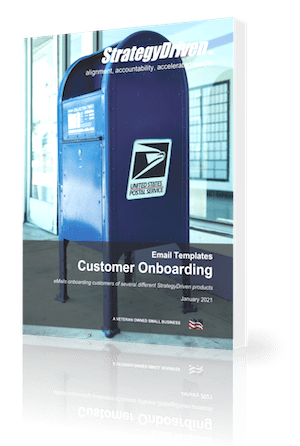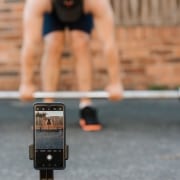Augmented Reality based Indoor Navigation: Available Tracking Systems and Challenges

Businesses are actively leveraging the advantages of AR in indoor navigation systems; the global indoor positioning & navigation market is projected to reach $23.6 billion by 2023.
Augmented Reality Redefines Indoor Positioning
Augmented reality in indoor positioning is a next-generation solution. The possibility is that in the next few years, the navigation systems that utilize AR would become industry standards for many fields and eventually be beneficial to both users and companies.
Augmented reality (AR) provides an interactive experience by adding imaginary objects to the real world through computer-generated perceptual information. The release of Apple’s ARKit and Google’s ARCore has significantly improved the navigation apps and is regarded as the two powerful mobile AR platforms designed for AR applications to be built on. These platforms provide a variety of tools for understanding the objects in the real world.
ARKit combines device motion tracking, camera capture, advanced scene processing, and display conveniences to build AR apps. It allows developers to build immersive apps on the iPhone or iPad by analyzing the scene captured by the iPhone’s camera and fused with motion sensors to track the location of the object in 3D space.
ARCore combines motion tracking, environmental understanding, and light estimation. Motion tracking lets the phone understand and track the position relative to the world by observing feature points taken through the android phone’s camera and sensor data. Environmental understanding allows the devices to detect the horizontal and vertical surfaces of the floor.
Let’s get familiar with available Tracking Systems
GPS, which is considered as the global tracking system for the outdoors, but this also fails when it comes to finding location indoors. To overcome this, leveraging AR into indoor positioning solutions aids ease of navigation and enhances the user experiences. The accuracy and functionality of AR for indoor navigation provide tangible benefits for organizations and end-users (such as customers in a store, workers in a warehouse, visitors in a building).
Let’s have a look at the existing tracking systems for indoor positioning.
1. Visual recognition and SLAM systems (vSLAM)
Simultaneous localization and mapping (SLAM) is a computational method for obtaining the 3D structure of an unknown environment that uses the data captured by the external sensors to self-locate and build a map of the surrounding environment simultaneously. SLAM algorithm works by mapping out surroundings, extracting features, keeping a track of the user’s location, and based on this info, constantly updates the navigation map.
Visual SLAM refers to the complex process of calculating the location and mapping of a device to its environment, along with taking visual inputs from the camera. It works with 3D vision cameras and finds application in camera pose estimation in AR systems like head-mounted displays, indoor navigation & positioning apps.
The whole process is carried out in real-time and is considered more flexible than other tracking systems like LIDAR and UWB as it doesn’t deal with any external sensors but only with a camera. vSLAM technology is more accurate (tracks up to millimeters) in smaller areas than it is in wide-open areas.
2. Ultra-wideband (UWB)
Ultra-wideband (UWB) positioning systems are considered as one of the most effective options in advanced indoor positioning where a higher degree of precision is required. To monitor AR-based indoor positioning, it’s necessary to estimate the line-of-sight vector of observers using a UWB transceiver that estimates the distance to another UWB transceiver via time of arrival (TDoA). The process is carried out in real-time and can transmit a large amount of data at low power and low cost and can precisely locate the object via Time-of-flight (ToF) up to 200 meters.
One of the use cases where UWB promises to be the most effective tracking system is warehouse management where hundreds of thousands of items are kept and need to be located in the shortest time possible on the customer’s order. In the case of pinpoint accuracy, the UWB positioning system is considered the best option available.
However, this level of accuracy always comes at a cost. The tags used in UWB are much more expensive than tags used in other tracking systems, and hence, makes it a very expensive system to have. In such cases, businesses need to consider if they require pinpoint accuracy to locate the object, or more general information can do their work.
3. Bluetooth Beacons
Beacons are low-energy Bluetooth transmitters that are used to communicate with Bluetooth-enabled smartphones, tablets, etc when they are in close proximity to the beacons. Beacons can be mounted on the wall or ceiling all over the location at a distance of 10-20 meters. After the installation, Bluetooth beacons start transmitting the signals at regular intervals of time and can see the device once it’s in the range which may vary from 20m to 300 m.
Bluetooth Beacons have many applications in the business world like retailers use beacons to trigger location-based features on customer’s mobiles including coupon, store map, sale, discount, etc when they pass by their favourite store. For smaller range applications like shops, malls, airports, buildings, using beacons might be one of the best options to enhance user experiences. Despite these benefits, beacons are considered expensive & obsolete and are now being replaced by visual markers due to their greater accuracy.
4. Virtual Positioning Systems (VPS)
VPS is the amalgam of artificial intelligence, image processing & augmented reality technology that allows the devices to virtually place the surroundings in a map. Virtual positioning systems work well over large areas and fall short when trying to determine position within buildings. It creates a 3D environment by comparing multiple images of the surroundings taken by the phone’s camera to recreate the position relative to the environment using the GPS triangulation technique.
For example, Google uses Street View data to locate the user’s position by taking multiple images and stitching them together into a single 360-degree image, using buildings as reference points. Apple is using ARWoldMap in many outdoor applications to determine the user’s location.
Challenges in Indoor Positioning Systems
The use of AR in Indoor positioning offers so much, but there are still some challenges that need to be addressed during or before the implementation.
- Indoor navigation is impossible without a proper map. Building an accurate map is a critical process as it requires the correct coordinate system in the 3D form then aligning it with the geographical coordinates using images taken from various sources. While building maps are critical, maintaining the map and always keeping them up to date become mandatory to provide the best possible user experience.
- Drawing the route in the real-world using AR is also a big challenge that needs to be addressed. Visual markers are placed to draw coordinates at specific points to analyze the surroundings and are made sure that it matches to the real-world. AR effect is always placed on the top of any image which creates an illusion of placing digital content in the real world while rendering virtual places.
- Having an uninterrupted session becomes another hurdle to get the accurate result in locating the object. To get this result, it’s necessary for users to keep their camera active from initial marking to the final destination. This limitation can be addressed by using Wi-Fi RTT (Round-trip-time) which can provide an accuracy level up to 1 to 2 meters. It measures the time for the signals to reach the user’s device and be received back using 3 or more wi-fi routers.
The Future of AR Indoor Navigation
As more companies explore the potential of AR in navigation systems, it would continue to prove a game-changer in indoor navigation. In the coming years, the use of visual markers will increase due to their ability to bring down the accuracy threshold down to within millimeters.
Wi-Fi RTT-based positioning will see greater adoption and proliferation due to greater precision than WPS (Wi-Fi protected systems). The time taken for sending signals to users and receiving them back will reduce and hence, will increase the accuracy more. The performance of mobile devices will also advance, which will support more complex algorithms. We might see other hybrid solutions like combining visual markers and visual positioning systems which will improve the quality of tracking in near future.
Augmented reality offers a potential solution to improve indoor positioning accuracy and is continually evolving over the years. Augmented reality indoor navigation technology is set to experience significant growth in the coming years, and, as a result, will be firmly on the radar as an investment theme in most companies regardless of their industry type.
About the Author













Leave a Reply
Want to join the discussion?Feel free to contribute!